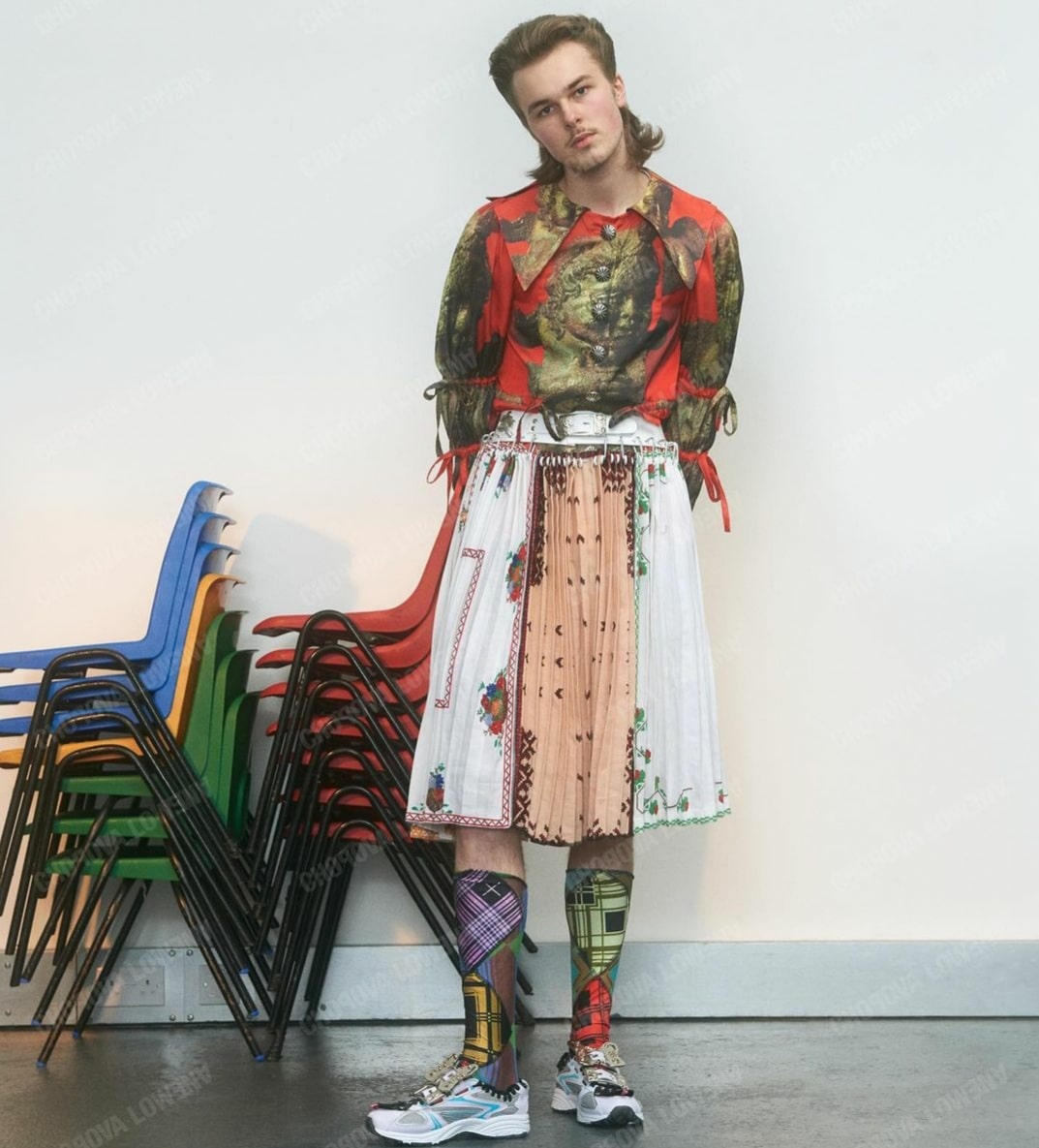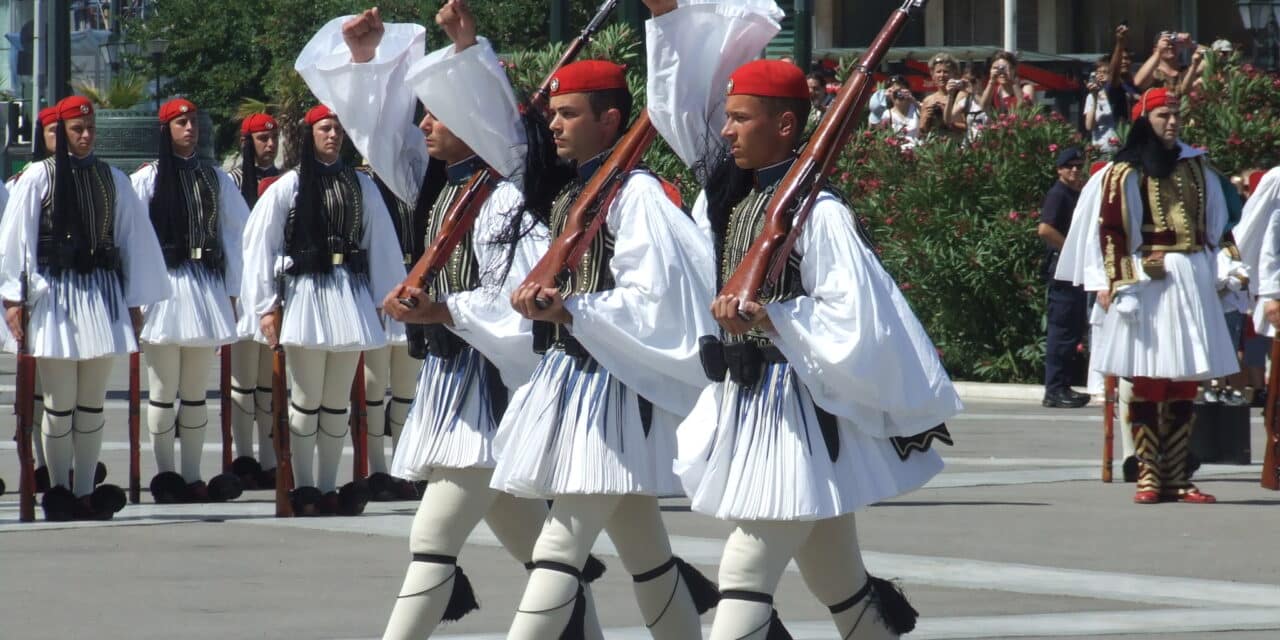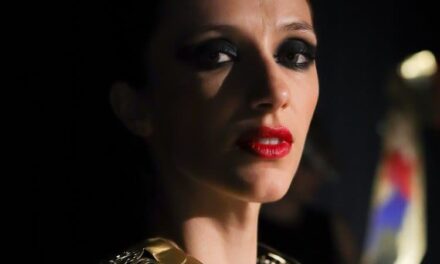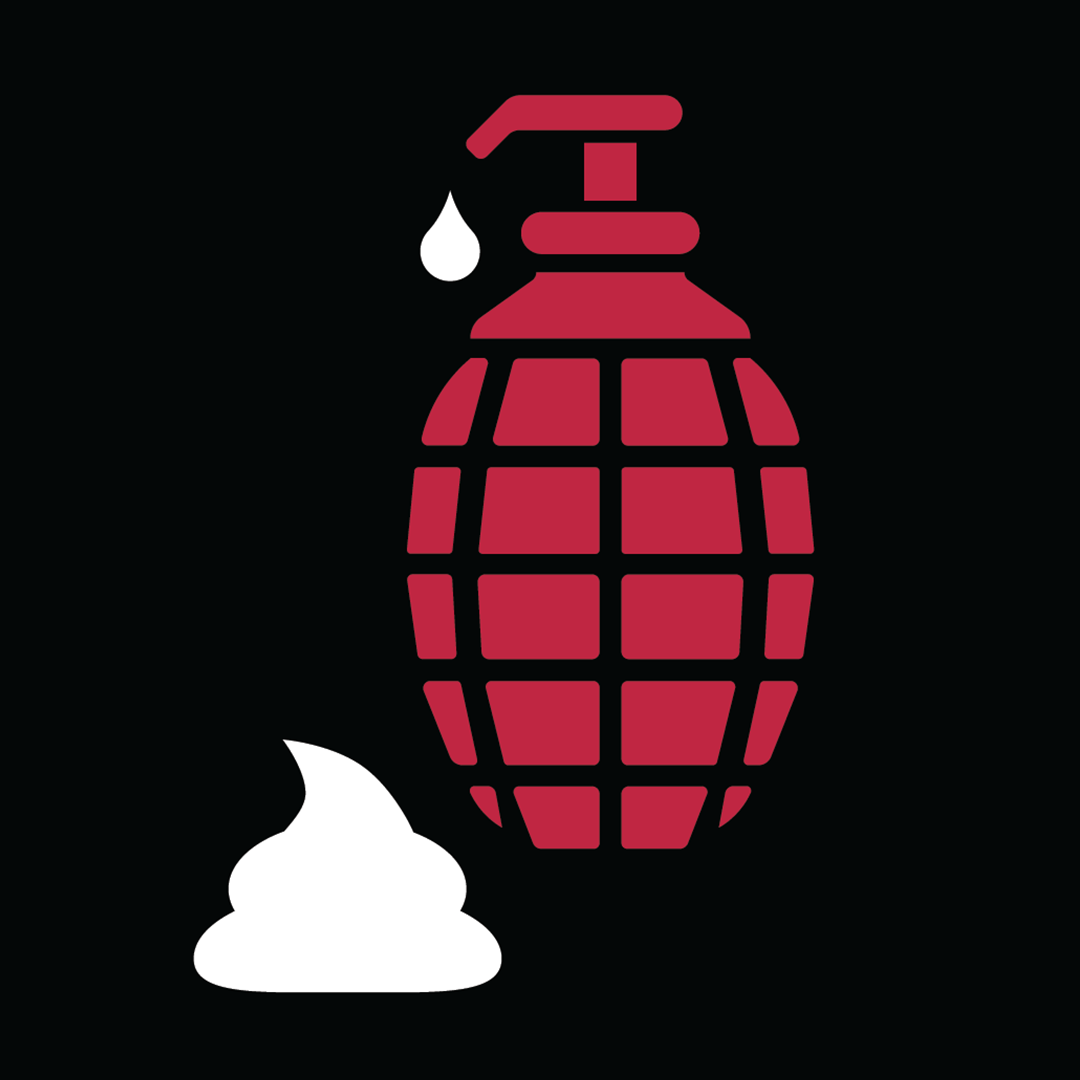Photo taken from https://commons.wikimedia.org/wiki/File:Greek_guard_uniforms_3.jpg
Pleats are a versatile tool in the right designers’ hands. They add texture and shape, improve fit, and create movement in a garment. Beginning as a sign of luxury, pleats have traveled across the globe, taking on new meanings as the trend became more accessible.
The technique of pleating originated in ancient Egypt and was done completely by hand. Pleated garments were made from cotton, silk, and wool and the pleats would disappear after every wash so the process had to be redone. At this time, pleats were seen as a luxury due to the complicated, time-consuming technique. They were also a symbol of power and wealth that decorated the tunics of rulers. Skipping ahead to the 16th century, pleats remained a signifier of power and luxury with ruffs— pleated collars worn by men and women as a symbol of status.
Beyond the status, pleated garments hold cultural significance, especially in menswear. The Greek Fustanella, a knee length pleated skirt, is worn by men for ceremonial and military occasions and features 400 pleats which represent the liberation of Greece from years of Ottoman occupation. The Scottish kilt is another pleated garment worn by men that holds great historical and cultural meaning. The knee length dress skirt with pleating in the back has long symbolized masculinity. Both are cultural identifiers that signify strength and power.
In recent decades pleating was used in men’s fashion for more practical reasons. Rather than pleated skirts, pleating was used in men’s pants to create breathing room and improve fit. Recently pleats have made a big comeback in fashion. With this resurgence many designers are emerging that have taken pleating to the next level. They are finding new and innovative ways to combine the ancient technique with contemporary styles to reimagine pleating in men’s apparel.

After doing extensive research on pleating since 1988, Issey Miyake and his team created HOMME PLISSÉ ISSEY MIYAKE in 2013. This brand was crafted with the intent to cater to the lifestyle of modern men and liberate the way they dress. Miyake’s use of pleating takes on a very different meaning and appearance than its historical use in his men’s apparel. Using original pleating technology, Issey Miyake creates uniform pleats on wrinkle resistant and quick drying fabrics to create garments that are comfortable, easy to care for, and lightweight. Some products are pleated after the cut and sew process, while others are sewn after the garment is pleated which creates a more architectural structure. Miyake’s use of pleating not only creates a relaxing fit, but a relaxing appearance as well. The clean lines of the accordion pleats, the way they follow the curves and lines of the body, the choice of colors and soft silhouettes all communicate a soothing tone. Homme Plisse creatively utilizes pleats for all their functional and aesthetic worth.
The use of pleating in Chopova Lowena kilts presents a very different message from Homme Plisse. Chopova Lowena is a clothing brand created by Emma Chopova and Laura Lowena which combines British and Bulgarian craftsmanship with folklore and sportswear to create their signature look. Their knife pleated kilts combine segments of vintage Bulgarian fabric and plaid and have chunky leather waistbands attached by carabiners.
The use of metal hardware and leather mixed with the traditional textiles creates the perfect blend between folk and punk. Like the traditional kilt, there is a sense of power that radiates from the people who rock Chopova Lowena kilts. Their kilts are also gender neutral and have been styled on everyone from Maggie Rogers to Harry Styles.
Similar to Chopova Lowena, Marco Ribeiro is also crafting gender neutral pleated looks. Marco Ribeiro is a clothing brand working to spread a message of equality through his work. His collections are filled with pleated circles which symbolize peaceful protest, union, and celebrating yourself. Ribeiro uses pleats to create unique silhouettes that hold their own shape. He creates large, pleated circles that can be styled as headpieces or tops. The pleated circus skirt features a tight waistband with oversized box or graduated pleats that jut out around the bodice. These silhouettes are genderless and almost hide the shape of the model’s body. Ribeiro’s use of pleating is exaggerated in its form and is a brilliant mix of sculpture and apparel.
Pleating holds so much symbolism and cultural influence within its folds. Learning how this technique has progressed and become more accessible within menswear unveils just how much history is behind every modern trend. As the trend progresses, we also see it take on new meanings. From a symbol of luxury to a symbol of unity, pleating has evolved to take on new meaning in the hands of today’s designers.
Sources:
- https://threadstories.co/the-story-behind-pleating/#:~:text=A%20bit%20of%20history%E2%80%A6&text=But%20they%20are%20nothing%20new,they%20were%20considered%20a%20luxury.
- https://theculturetrip.com/europe/greece/articles/a-brief-sartorial-history-of-the-greek-fustanella/
- https://www.metmuseum.org/toah/hd/kilt/hd_kilt.htm#:~:text=The%20kilt%20as%20we%20know,in%20the%20late%20sixteenth%20century.
- https://www.isseymiyake.com/en/brands/hommeplisse
- https://www.isseymiyake.com/hommeplisse2016aw/en/
- https://www.britannica.com/topic/ruff-collar
- https://www.vogue.com/fashion-shows/spring-2023-menswear/homme-plisse-issey-miyake/slideshow/collection#24
- https://www.instagram.com/iammarcoribeiro/
- https://www.chopovalowena.com/





